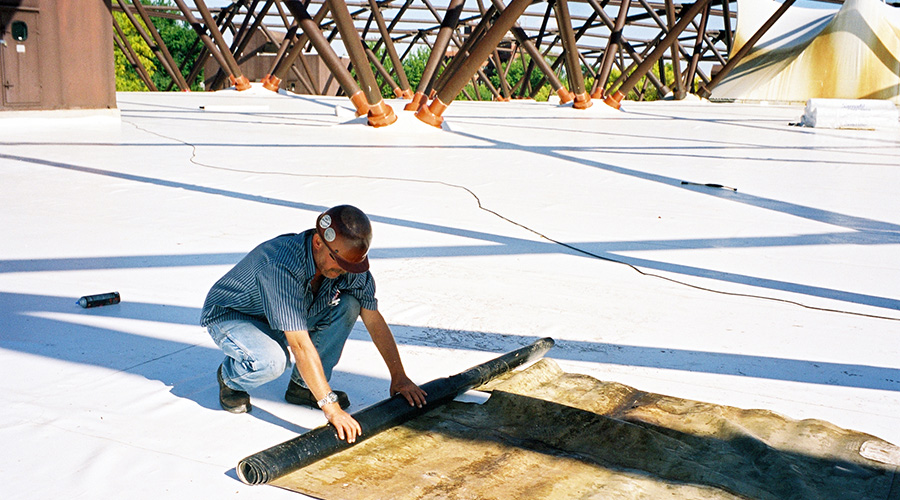Vegetative Roofs: Modular vs. Built In Place
After assessing the load-bearing capacity of the building on which the vegetative roof will be installed, managers need to decide between a modular system and built in place.
Modular systems are comprised of individual, pre-planted trays that arrive at a facility nearly covered with vegetation. The trays have built-in water-retention capabilities and typically weigh less than built-in-place, loose-laid systems. If managers specify the modular system, they need to build in time for the vegetation — typically planted by the manufacturer or a nursery that works with the manufacturer — to mature.
Allowing horticultural experts to care for the plants from the start helps ensure the vegetation will continue to prosper once the organization installs the system, though no one can predict how the plants will react once placed on the roof. Organizations often get discouraged when they plant their own roofs and the vegetation does not grow as expected, creating brown or bare spots.
Due to pre-planting, the modular systems are more expensive upfront. But manufacturers say the savings related to reduced maintenance and installation costs help offset the higher initial investment. Individual trays also make it easier for technicians to troubleshoot leaks or other roofing issues.
“It’s very easy to pick those trays up, repair a leak and then just put them back down in place,” Baumann says. “You don’t even disturb the growing media or the plantings, which is a challenge with the built in place.”
The biggest decision related to built-in-place roofs is deciding between an intensive and extensive system. The difference resides in the depth of the growing media. The deeper the growing media, the more intensive the system. Intensive systems allow for greater diversity of plants, including turf, shrubs, and trees, Whittemore says. Organizations that specify intensive systems usually want to make the roofs accessible to the public.
Extensive systems generally have 2-4 inches of growing media, making them more limited in terms of plant selection. But they also weigh less than intensive systems, reducing the load-bearing requirement for the building.
“With extensive green roofs, they’re a fairly easy option for retrofitting without having to beef up the structure of your building,” Poncé says. “It’s also intended to be a low-maintenance roof, whereas intensive roofs are generally going to require more irrigation to support your flora. They’re going to require more maintenance and more applications of fertilizer, as well.”
Related Topics:













